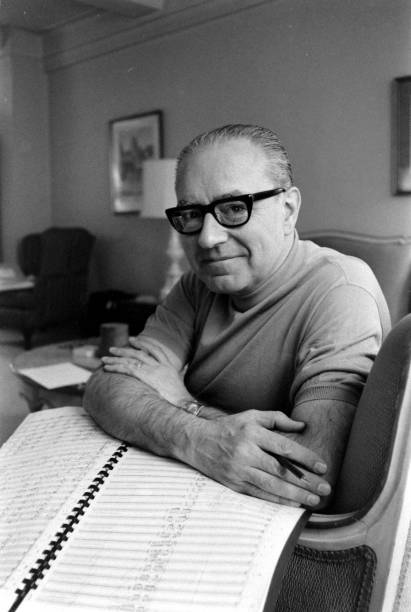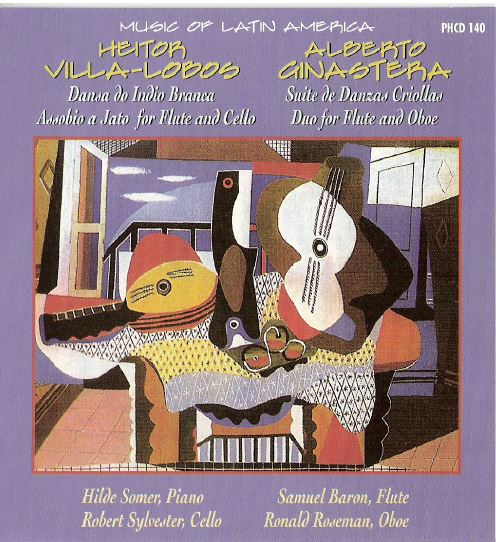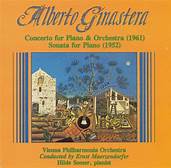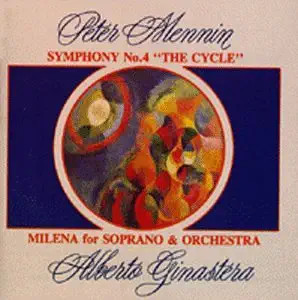
Ginastera, Alberto
Alberto Ginastera (1916-1983) Alberto Ginastera was born in Buenos Aires and received a musical education starting at an early age. He gained national recognition after the performance of an Orchestral Suite from his Ballet Panambi (1937) at the Teatro Colon. He achieved this prominence even before completing his musical studies. He gained international acclaim with the performance of his Second String Quartet by the Juilliard Quartet in Washington, D.C. in 1958.
By his own account, he saw his composing career as consisting of three creative periods. The first 1937-48, he called “Objective Nationalism”, in which he used Argentine folk music in his compositions. Argentine folk music is a multi-cultural fabric containing strands from Native Indian, African, European and “Criollo” (or Latin American) peoples. Ginastera was particularly attracted to the music of the Pampas – Argentine cowboy music. His most famous work in this genre was the ballet Estancia (1941) which is about life on a cattle ranch (estancia) Like Aaron Coplands Rodeo (1942) and Billy the Kid (1938), Ginastera would quote actual folk tunes.
His second period “Subjective Nationalism” 1948-56, the period of the String Quartet No. 1, the composer uses rhythms and creates folk-like melodies without actual quotation – much like the later work of Bartok and Kodaly.
The third period “Neo-Expressionism” from 1957-83 saw Ginastera embrace dodecaphonic serialism. The most prominent compositions of Ginasteras Neo-Expressionist period are the Quartet No. 2 for Strings (1958) Concerto for Piano and Orchestra (1961) and the operas Don Rodrigo and Bomarzo (1967)- the latter (which Newsweek had dubbed the “topless opera”), a potpourri of “sex, violence and hallucination” was actually banned in Buenos Aires for five years. Ginastera was the head of the Center for Advanced Musical Studies in Buenos Aires. His works are well represented on recordings.


